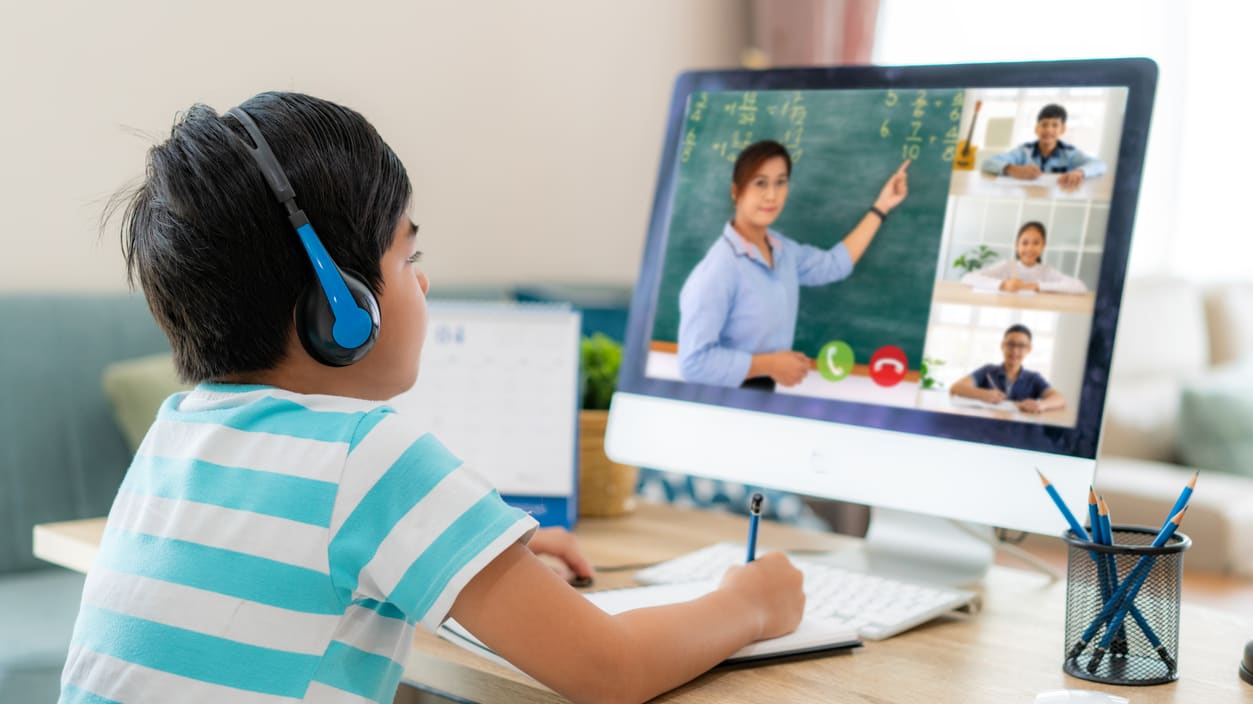DOL Provides Clarity on Coronavirus-Related Child Care Leave
Parents' choices may impact eligibility for paid leave and unemployment benefits

Working parents are facing myriad challenges as children resume their studies in alternative formats due to the continuing COVID-19 crisis. In what situations are employees eligible for child-care-related leave or unemployment benefits? The U.S. Department of Labor (DOL) tackled some frequently asked questions in its most recent guidance.
On Aug. 27, the DOL released more questions and answers related to new school schedules and paid leave under the Families First Coronavirus Response Act (FFCRA). The FFCRA requires employers with fewer than 500 employees to provide up to 80 hours of sick leave and an additional 10 weeks of paid family leave—paid at two-thirds the employee's regular rate—when employees are unable to work because they need to care for a child whose school or child care provider is closed or unavailable for COVID-19-related reasons.
The DOL also issued a letter on expanded unemployment eligibility under the Pandemic Unemployment Assistance provisions, which cover people who are unable to work because they are providing primary care for a child who is unable to attend school because of the pandemic, among other reasons.
"Under these federal stimulus programs, parent-employees with school age children could access certain benefits in cases where there was a school closing," said Robert Robenalt, an attorney with Fisher Phillips in Columbus, Ohio. "Now that schools are making decisions on reopening, the DOL has provided guidance as to when parents may be entitled to leave or unemployment benefits under these federal programs."
Hybrid Learning Formats
Schools are using various in-person and distance learning formats and schedules during the pandemic. The new guidance explains when employees may be eligible for related paid leave.
"The key takeaway is that employers need to be flexible in administering FFCRA leaves for school closure reasons, given that many schools that are reopening are doing so on a 'hybrid' basis in which students only go to school on certain days and must stay home on others," explained Robin Largent, an attorney with Carothers DiSante & Freudenberger in Sacramento, Calif.
Some schools, for example, are alternating in-person and distance learning days based on students' last names, and students are allowed to attend in-person classes only on their allotted days. Under these circumstances, parents are eligible to take paid leave on days when their child is required to engage in remote learning, so long as the parent actually needs the leave for child care purposes and is the only suitable person available.
"The 'off' days still count as closure days for purposes of entitlement to FFCRA leave," Largent said.
In some districts, school campuses are closed for now and the administration may decide to open for in-person learning later in the year. "You are eligible to take paid leave under the FFCRA while your child's school remains closed," the DOL said. "If your child's school reopens, the availability of paid leave under the FFCRA will depend on the particulars of the school's operations."
A person who is not receiving paid-leave benefits may be eligible for Pandemic Unemployment Assistance if he or she is "unable or unavailable to work" due to child care needs while a school is operating online or in a hybrid format.
Parents' Choices May Impact Eligibility
Many schools are giving parents the option between having their children attend in-person classes or participate in a remote learning. Parents can choose to keep their children home for a variety of reasons, including out of concern that their child will contract COVID-19 on campus. Are employees eligible for FFCRA or unemployment benefits if in-person learning is offered and they opt for online learning?
"This is the issue that people really did not have a lot of clarity on," noted Ashley Prickett Cuttino, an attorney with Ogletree Deakins in Greenville, S.C. In this scenario, employees are not eligible for FFCRA leave or unemployment benefits because they made the choice to keep their children home, she explained.
[Need help with legal questions? Check out the new SHRM LegalNetwork.]
FFCRA leave and unemployment benefits are only available if the school is closed for reasons related to COVID-19. "The DOL guidance reflects that these benefits programs are reserved only for cases in which the school has chosen to conduct distance learning, or some hybrid form of distance learning," Robenalt explained.
However, the DOL noted, parents may be eligible for paid leave to care for a child who has been ordered to quarantine or self-isolate.
Employees may also be eligible for leave under certain federal or state laws if their child is immunocompromised or otherwise truly at a greater risk of serious illness and therefore can't attend in-person classes, Cuttino said.
Check for Updates
In these unprecedented times, employers should ensure that they are keeping up with the latest guidance and communicating with their employees. Employers should let workers know where to find the DOL's questions and answers so employees understand the full impact of their choices, Cuttino said. HR professionals and employers can check the DOL's COVID-19 resource page for updates.
Employers should also understand what's going on in their own school districts, Cuttino added. "But that may be easier said than done, because employees may have children in multiple school districts, and they're are not all doing the same thing."
Visit SHRM's resource page on coronavirus and COVID-19.
An organization run by AI is not a futuristic concept. Such technology is already a part of many workplaces and will continue to shape the labor market and HR. Here's how employers and employees can successfully manage generative AI and other AI-powered systems.



